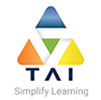This course enables you to work in real project implementing ODI (11g or 12c ) and how to build data warehouse using different modules of ODI, how to transform and validate data from one form to another (files, XML, database etc). We customized this course curriculum to meet the current industry standards.
About Oracle Data Integrator
Course Objective:
At end of this training you will be able to:
Learn ODI architecture and how it’s different from other ETL tools
Build master and Work repositories.
Create Agent (ODI’s execution engine) and how to configure agent to meet optimization.
Create different objects like Packages, Interface (Mapping), procedure, Models and variables to design a data transformation work flow.
Learn how to handle Exceptions in work flow through customizable code and through rich ODI components like Load plans.
Customize view of ODI repositories for every user through its Security architecture.
How to implement physical and logical architecture and migrate the logical code from development to production environment.
Implementation of KMs for different technology and how to customize your own KM to meet complex requirement.
Reverse Engineer metadata in ODI for different technology like RDBMS, Files, XML, excel etc.
Code optimization techniques to speed up the overall batch process and learns how ODI excels it.
Using customize java APIs in different objects of ODI to make code environment independent.
Implementation of CDC and SCD in ODI.
Learn new features provided in latest 12c version and how it integrates more advanced technology like Big data.
Who should do this course?
ODI can be learnt by anyone who wants to make his career in Data science as Data analyst .This training will be suitable for:
Fresh Graduates
Data Scientist works in ETL and reporting tool
Who are having good knowledge in Java
Prerequisite:
Basic knowledge in SQL is must
Course Content
Oracle Data Integrator Overview
Traditional ETL vs ODI ELT
Business use cases
ODI Architecture
Installation overview
ODI Repositories And Agents
Creating Master and Work repositories
Administering repositories
Introduction to Repositories Metadata (SNP tables)
Agents and its configuration (Standalone Agent)
ODI Security and Topology
Custom profiles in security
Creating users with generic and non-generic profiles
Topology Configuration
Defining any new technology in Topology
Logical and Physical architecture
Setting data server and physical schema
Context and Agents
Defining Flex fields for objects
ODI Variables, functions and procedures
Types of variables
Use cases of variables in work flow
User defined Functions
Native and user defined sequences
ODI procedures
Global objects (variable, functions, procedures, sequences and KMs)
Knowledge Modules
Six different Types of knowledge Modules
Knowledge module customization w.r.t. to business use cases
Technology specific KMs
Brief discussion of KM options and tasks
Introduction to java APIs and their use cases inside KMs.
Creating your own customized KM
Multi connection KM
Models and Constraints
Introduction to Models and Datastore
Defining ODI model w.r.t. Technology
Model creation through Common format designer
Reverse Engineering
Defining Datastore
ODI specific constraints on Datastore
Partitioning
Generating DDL scripts and Interface IN/OUT
Data Quality Control
Check Contraints
Static and Flow control
Recycle errors
Metadata tables for error diagnostics (SNP tables)
ELT vs ETL
Defining Staging Area
Use cases for defining staging area w.r.t. technology
ODI Operator
Monitoring Integration process
Debugging integration Session and tasks
Restart mechanism
ODI job scheduling
ODI logs and log purge
Packages, Load plans and Scenarios
Introduction to package work flow
Synchronous and Asynchronous Run
Creating Scenarios for objects
Dynamic value binding in Scenarios
Business use cases for defining flow and scripting
Defining sequence of steps and running a package or scenario
Exception handling inside package
Introduction to Load plans
Serial and parallel session execution in Load plans
Flow control and exceptional handling in Load plans
ODI Designer
Project and its components
Cross – references of objects in designer navigator
Knowledge module Import
Markers and Memos
Scope of variables and other objects
Change Data capture (CDC)
CDC overview and implementation
Static and consistent CDC
Trigger based CDC
Golden gate CDC
Timestamp based CDC
Journalizing Knowledge module (JKM)
Data warehousing
Data warehousing basics and overview
Datamart
Dimension and Facts
Star and snowflake schemas
Slowly changing Dimension (SCD)
SCD overview
SCD type 1, 2 and 3
SCD implementation inside Models
Knowledge Module customization for SCD
Integration of dimension and facts table (end to end cycle)
Interface (Mapping)
Navigation and mapping editor
Mapping creation with multiple targets 12c
Defining LKM, IKM and CKM inside mapping
Implementation of business logic inside mapping
Defining datasets and lookups
Physical and Logical mapping (12c)
Defining options inside KM
Temporary Interface (11g)
Reusable mapping (12c)
Data warehousing implementation using reusable mapping
Designing ETL vs ELT mapping
ODI components
Overview and implementation
Joins and filters
Aggregation (not available in 11g and its work around)
Sets (UNION, UNION ALL, MINUS, INTERSECT)
PIVOT and UNPIVOT
Expression
Datasets
Split and sort
Lookup and Distinct
Code Migration
Different techniques for code migration
Smart import and Export
Unique internal Ids and GUID
Unique repositories IDs
Export and Import Hierarchy
Setting up production environment
Working with Different Technologies
File and table transformations
XML transformations
Working with delimited and fixed file format
Version Controlling
Version controlling
Implementation versions in Solutions
Maintain versions with metadata
External code backup
ODI Tools Reference
Tools guide
Different file Tools
Object related tools
Execution tools
Tool Customization
ODI through Web Services
Introduction to ODI web services
J2EE agent and its advantage
Data services
ODI console
Invoking third party web services
Managing Executions using web services
ODI Performance Tuning
Mapping optimization (data movement reduction)
Runtime optimization (Agent location)
Load balancing
Mapping loading stratagies.
Miscellaneous
Integration of Big data and hadoop in ODI
Integration with Nosql databases
Implementing Jython code in ODI procedures
Knowledge Module customization complex use cases
Implementation of Java Grovvy within ODI
Call Now- +91-921-276-0556


